Lab 6-2
Analyze the malware found in the file Lab06-02.exe.
Questions and Short Answers
What operation does the first subroutine called by main perform?
A: The first subroutine at 0x401000 is the same as in Lab 6-1. It’s an
ifstatement that checks for an active Internet connection.What is the subroutine located at 0x40117F?
A:
printfis the subroutine located at 0x40117F.What does the second subroutine called by main do?
A: The second function called from main is located at 0x401040. It downloads the web page located at: http://www.practicalmalwareanalysis.com/cc.htm and parses an HTML comment from the beginning of the page.
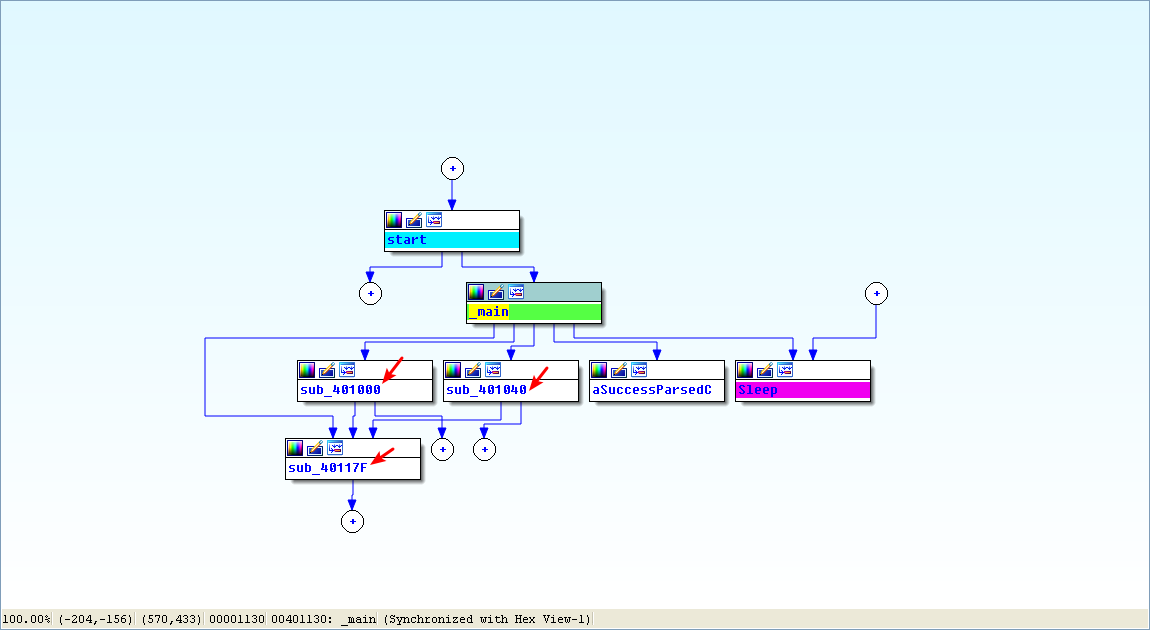
What type of code construct is used in this subroutine?
A: This subroutine uses a character array filled with data from the call to InternetReadFile. This array is compared one byte at a time to parse an HTML comment.
Are there any network-based indicators for this program?
A: There are two network-based indicators. The program uses the HTTP User-Agent Internet Explorer 7.5/pma
and downloads the web page located at: http://www.practicalmalwareanalysis.com/cc.htm.What is the purpose of this malware?
A: First, the program checks for an active Internet connection. If none is found, the program terminates. Otherwise, the program attempts to download a web page using a unique User-Agent. This web page contains an embedded HTML comment starting with <!--. The next character is parsed from this comment and printed to the screen in the format “Success: Parsed command is X,” where X is the character parsed from the HTML comment. If successful, the program will sleep for 1 minute and then terminate.
Detailed Analysis
We begin by performing basic static analysis on the binary. We see several new strings of interest, as shown in Listing 6-1L.(使用 IDA 也可以檢視字串,但是沒有這個全。IDA 可能有遺漏)
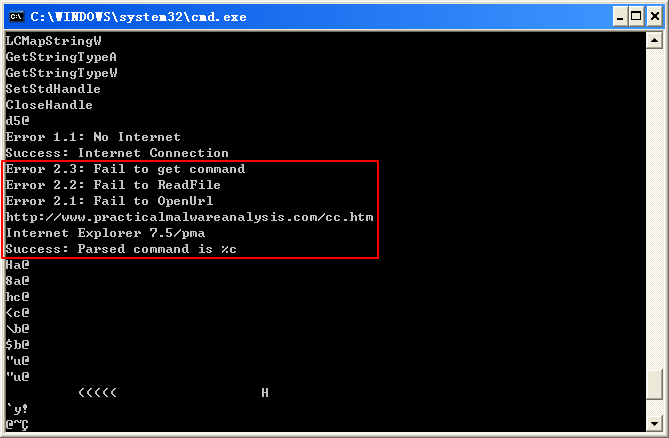
The three error message strings that we see suggest that the program may open a web page and parse a command. We also notice a URL for an HTML web page, http://www.practicalmalwareanalysis.com/cc.htm. This domain can be used immediately as a network-based indicator.
These imports contain several new Windows API functions used for networking, as shown in Listing 6-2L.
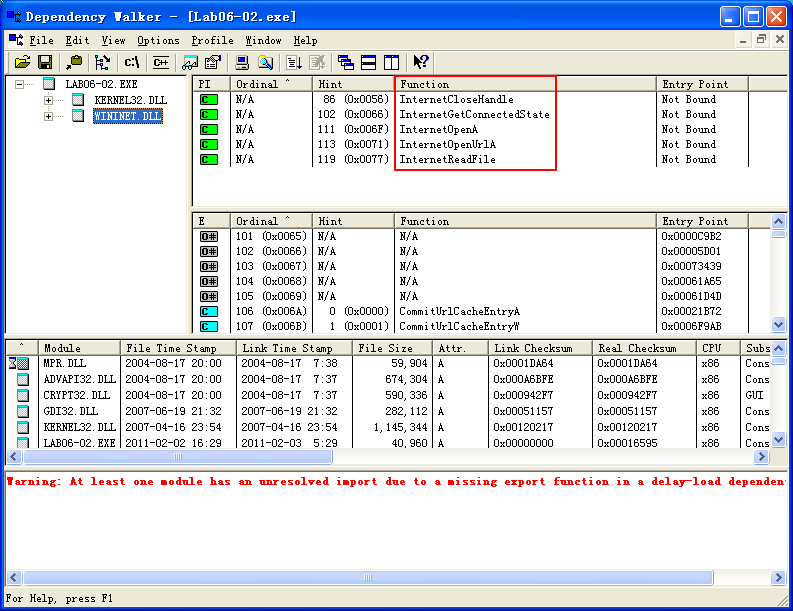
All of these functions are part of WinINet, a simple API for using HTTP over a network. They work as follows:
- InternetOpenA is used to initialize the use of the WinINet library, and it sets the User-Agent used for HTTP communication.
- InternetOpenUrlA is used to open a handle to a location specified by a complete FTP or HTTP URL. (Programs use handles to access something that has been opened. We discuss handles in Chapter 7.)
- InternetReadFile is used to read data from the handle opened by InternetOpenUrlA.
- InternetCloseHandle is used to close the handles opened by these files.
Next, we perform dynamic analysis. We choose to listen on port 80 because WinINet often uses HTTP and we saw a URL in the strings. If we set up Netcat to listen on port 80 and redirect the DNS accordingly, we will see a DNS query for www.practicalmalwareanalysis.com, after which the program requests a web page from the URL, as shown in Listing 6-3L. This tells us that this web page has some significance to the malware, but we won’t know what that is until we analyze the disassembly.
利用 ApateDNS,把對 www.practicalmalwareanalysis.com 的 DNS 查詢請求重定向到本機 127.0.0.1。假設惡意程式碼是出去訪問 80 埠的(這也是一種普遍的選擇),我們就可以在執行惡意程式碼之前,用 Netcat 監聽連線。
惡意程式碼頻繁使用 80 埠或 443 埠(HTTP 或 HTTPS 埠),因為它們作為外出連線目標埠通常不會被封禁或者監聽。
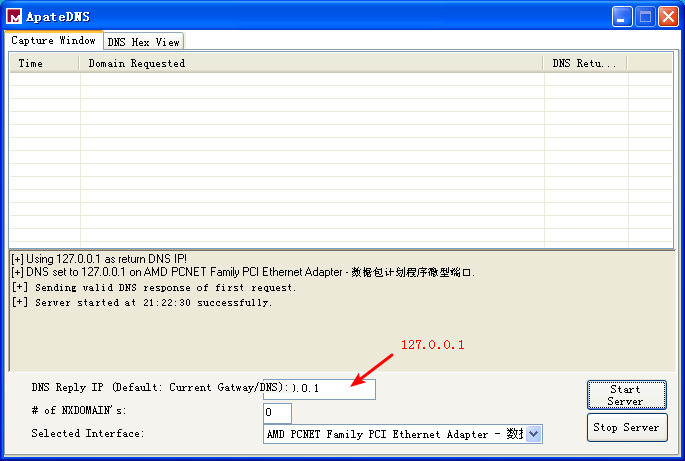
點選 Start Server,然後使用 Natcat 監聽 80 埠:
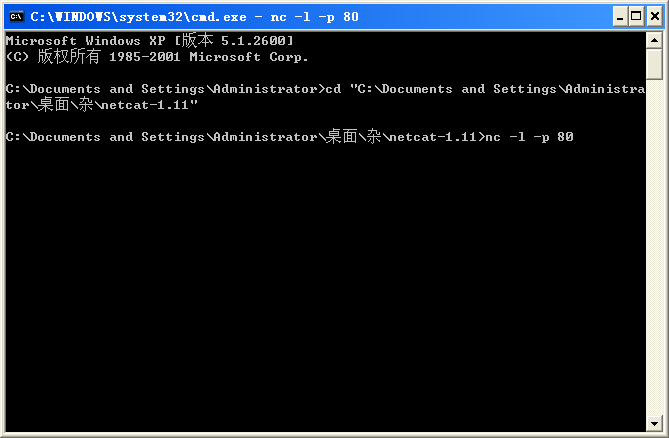
執行 Lab06-02.exe:
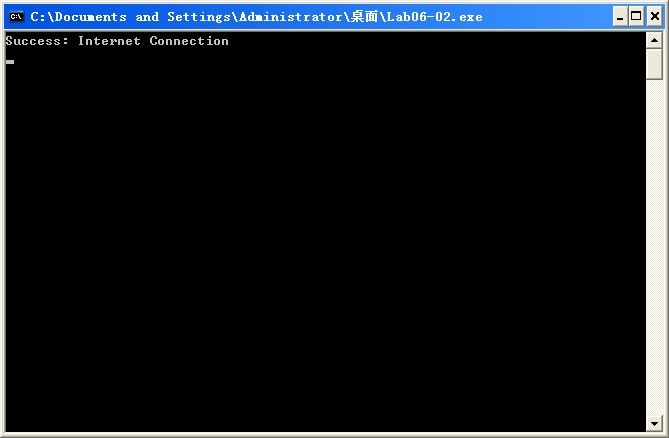


Finally, we load the executable into IDA Pro. We begin our analysis with the main method since much of the other code is generated by the compiler. Looking at the disassembly for main, we notice that it calls the same method at 0x401000 that we saw in Lab 6-1. However, two new calls (401040 and 40117F) in the main method were not in Lab 6-1.

In the new call to 0x40117F, we notice that two parameters are pushed on the stack before the call. One parameter is the format string Success: Parsed command is %c, and the other is the byte returned from the previous call at 0x401148. Format characters such as %c and %d tell us that we’re looking at a format string. Therefore, we can deduce that printf is the subroutine located at 0x40117F, and we should rename it as such, so that it’s renamed everywhere it is referenced. The printf subroutine will print the string with the %c replaced by the other parameter pushed on the stack.

Next, we examine the new call to 0x401040. This function contains all of the WinINet API calls we discovered during the basic static analysis process. It first calls InternetOpen, which initializes the use of the WinINet library. Notice that Internet Explorer 7.5/pma is pushed on the stack, matching the User-Agent we noticed during dynamic analysis. The next call is to InternetOpenUrl, which opens the static web page pushed onto the stack as a parameter. This function caused the DNS request we saw during dynamic analysis.

Listing 6-4L shows the InternetOpenUrlA and the InternetReadFile calls.

We can see that the return value from InternetOpenUrlA is moved into the local variable hFile and compared to 0 at \({\color{red}1}\). If it is 0, this function will be terminated; otherwise, the hFile variable will be passed to the next function, InternetReadFile. The hFile variable is a handle—a way to access something that has been opened. This handle is accessing a URL.
InternetReadFile is used to read the web page opened by InternetOpenUrlA. If we read the MSDN page on this API function, we can learn about the other parameters. The most important of these parameters is the second one, which IDA Pro has labels Buffer, as shown at \({\color{red}2}\). Buffer is an array of data, and in this case, we will be reading up to 0x200 bytes worth of data, as shown by the NumberOfBytesToRead parameter at \({\color{red}3}\). Since we know that this function is reading an HTML web page, we can think of Buffer as an array of characters.
Following the call to InternetReadFile, code at \({\color{red}4}\) checks to see if the return value (EAX) is 0. If it is 0, the function closes the handles and terminates; if not, the code immediately following this line compares Buffer one character at a time, as shown in Listing 6-5L. Notice that each time, the index into Buffer goes up by 1 before it is moved into a register, and then compared.

At \({\color{red}5}\), the cmp instruction checks to see if the first character is equal to 0x3C, which corresponds to the < symbol in ASCII. We can right-click on 3Ch, and IDA Pro will offer to change it to display <. In the same way, we can do this throughout the listing for 21h, 2Dh, and 2Dh. If we combine the characters, we will have the string <!--, which happens to be the start of a comment in HTML. (HTML comments are not displayed when viewing web pages in a browser, but you can see them by viewing the web page source.)
Notice at \({\color{red}6}\) that Buffer+1 is moved into EDX before it is compared to 0x21 (! in ASCII). Therefore, we can assume that Buffer is an array of characters from the web page downloaded by InternetReadFile. Since Buffer points to the start of the web page, the four cmp instructions are used to check for an HTML comment immediately at the start of the web page. If all comparisons are successful, the web page starts with the embedded HTML comment, and the code at \({\color{red}7}\) is executed. (Unfortunately, IDA Pro fails to realize that the local variable Buffer is of size 512 and has displayed a local variable named var_20C instead.)
We need to fix the stack of this function to display a 512-byte array in order for the Buffer array to be labeled properly throughout the function. We can do this by pressing CTRL-K anywhere within the function. For example, the left side of Figure 6-2L shows the initial stack view. To fix the stack, we right-click on the first byte of Buffer and define an array 1 byte wide and 512 bytes large. The down side of the figure shows what the corrected stack should look like.

Manually adjusting the stack like this will cause the instruction numbered \({\color{red} 7 }\) in Listing 6-5L to be displayed as [ebp+Buffer+4]. Therefore, if the first four characters (Buffer[0]-Buffer[3]) match <!--, the fifth character will be moved into AL and returned from this function.

注:對照著 Listing 6-5L 看
Returning to the main method, let’s analyze what happens after the 0x401040 function returns. If this function returns a nonzero value, the main method will print as “Success: Parsed command is X,” where X is the character parsed from the HTML comment, followed by a call to the Sleep function at 0x401173. Using MSDN, we learn that the Sleep function takes a single parameter containing the number of milliseconds to sleep. It pushes 0xEA60 on the stack, which corresponds to sleeping for one minute (60,000 milliseconds).
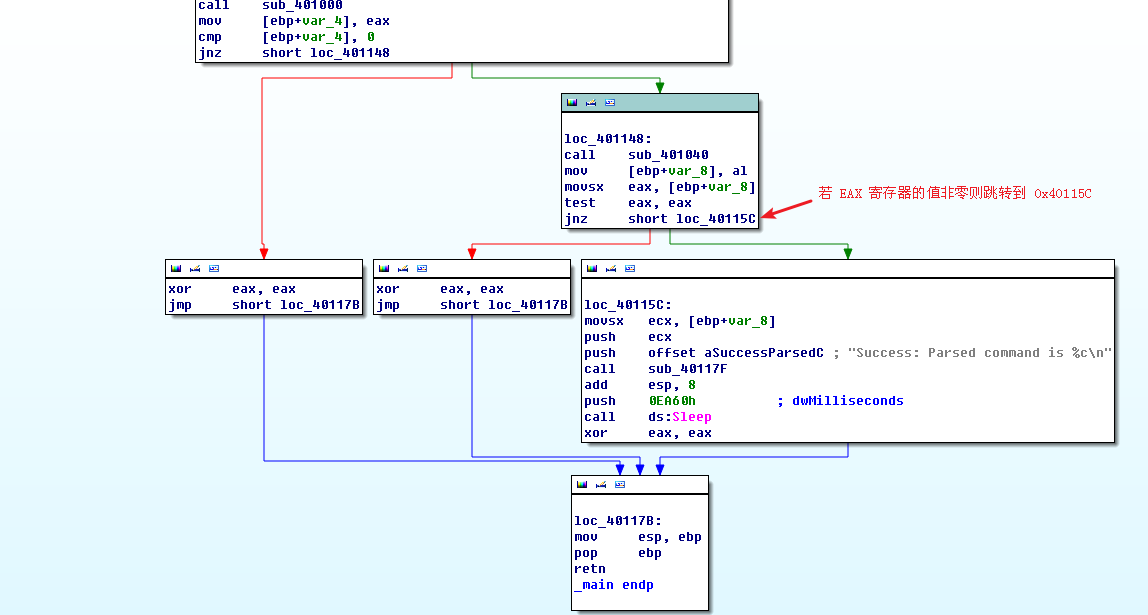
To summarize, this program checks for an active Internet connection, and then downloads a web page containing the string <!--, the start of a comment in HTML. An HTML comment will not be displayed in a web browser, but you can view it by looking at the HTML page source. This technique of hiding commands in HTML comments is used frequently by attackers to send commands to malware while having the malware appear as if it were going to a normal web page.
